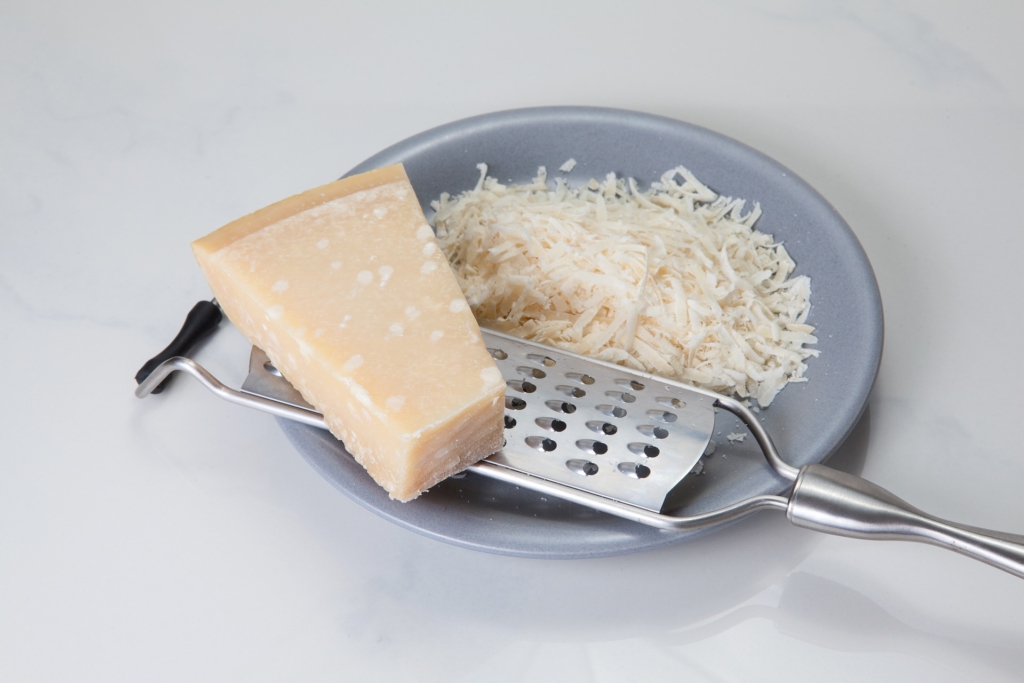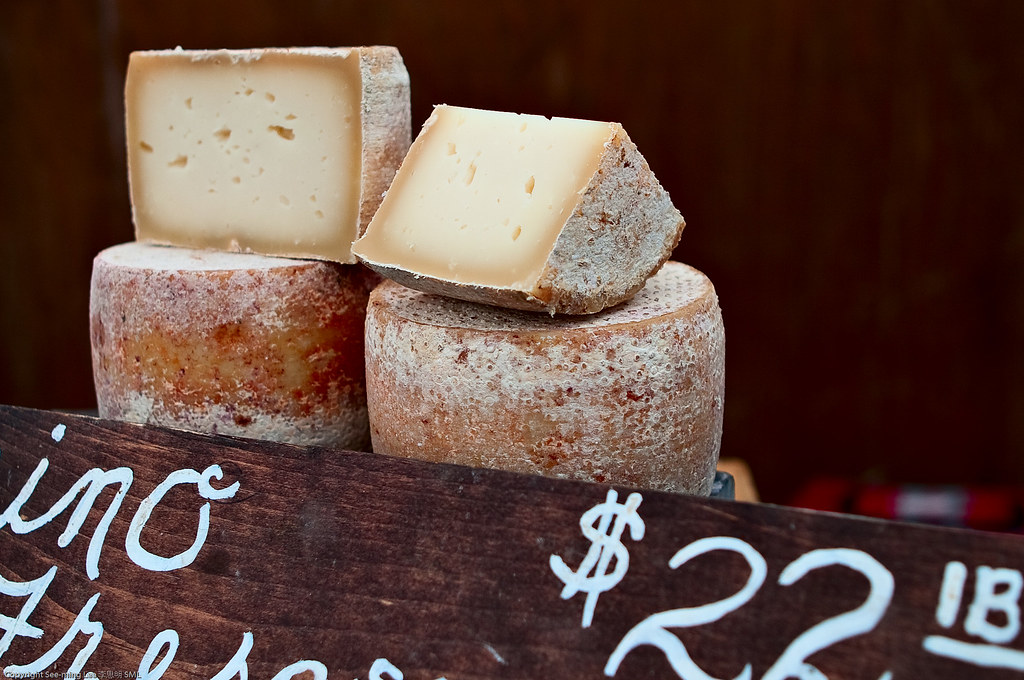Parmigiano Reggiano and Pecorino Romano – which one to use? In this article, we will explore some of the differences and similarities of these two classic Italian cheeses and how to make the most out of both in your cooking.
Flavor
Though the two cheeses are often used interchangeably, Parmesan and Pecorino actually have markedly different flavor profiles. Parmesan is a salty and savory aged cow cheese with rich, nutty undertones and a hint of tang. Pecorino, which is made from sheep’s milk and has a shorter aging time, is also salty but is noticeably more pungent and sharp with an acidic and musky flavor.
Texture
Parmesan and pecorino are both hard cheeses that shred wonderfully into delicate flakes. The key difference is that Parmesan, though just as firm, melts better than Pecorino. Due to Pecorino’s extremely high melting point, the cheese will generally stay firm even when added while cooking. Parmesan, meanwhile, melts at around 90°F, becoming smooth, creamy, and soft.

Appearance
Both Parmesan and Pecorino are firm cheeses that are solid throughout with a smattering of subtle whitish flecks. The main difference is in their color and rind. Parmesan cheese is generally a more golden yellow or orange hue with a similarly colored rind that is a few shades darker. Pecorino is creamy white, almost ivory, often bordered by a distinct black rind.
Uses
Pecorino has a much more distinct taste than parmesan, so is best used to add punchiness to simple dishes. Grate it over a basic soup or stock to introduce a funkier bite or over fresh salad to complement vibrant vegetal flavors. When adding pecorino to pasta, consider uncomplicated classics such as aglio e olio or cacio e pepe (try our recipe for Cacio e Pepe Risotto). Pecorino’s sharp flavor adds unexpected depth to simple recipes and transforms them into something new.
Parmesan’s versatile balance of salty, savory, and nutty makes it a wonderful table cheese or all-purpose cheese. It pairs particularly well with stronger or more complex flavor profiles, such as that of tangy tomato passata or hearty beef stew, for a layer of complementary cheesiness that won’t compete with the other flavors in the dish.

Feature Image: Flicker user See-ming Lee ( CC BY-SA 2.0 )



